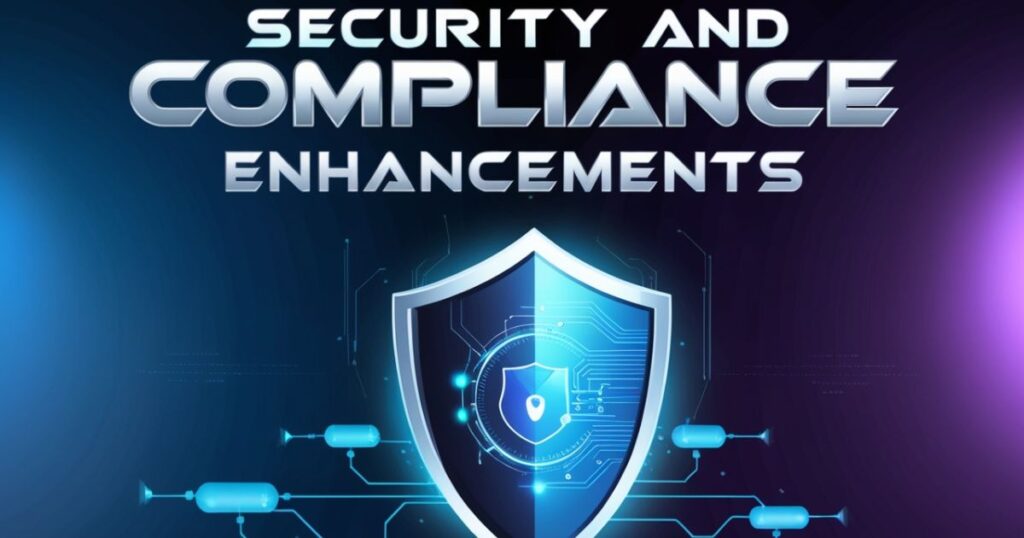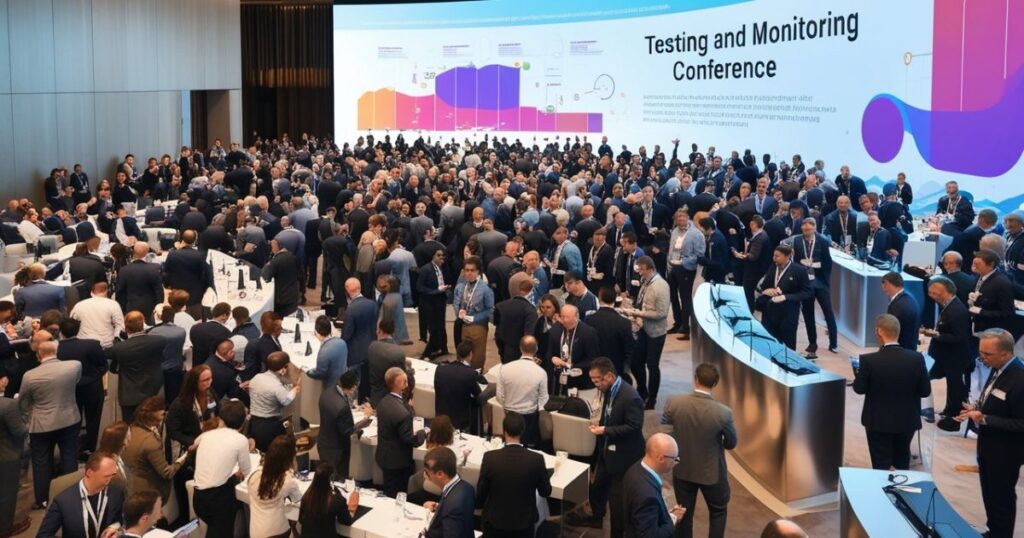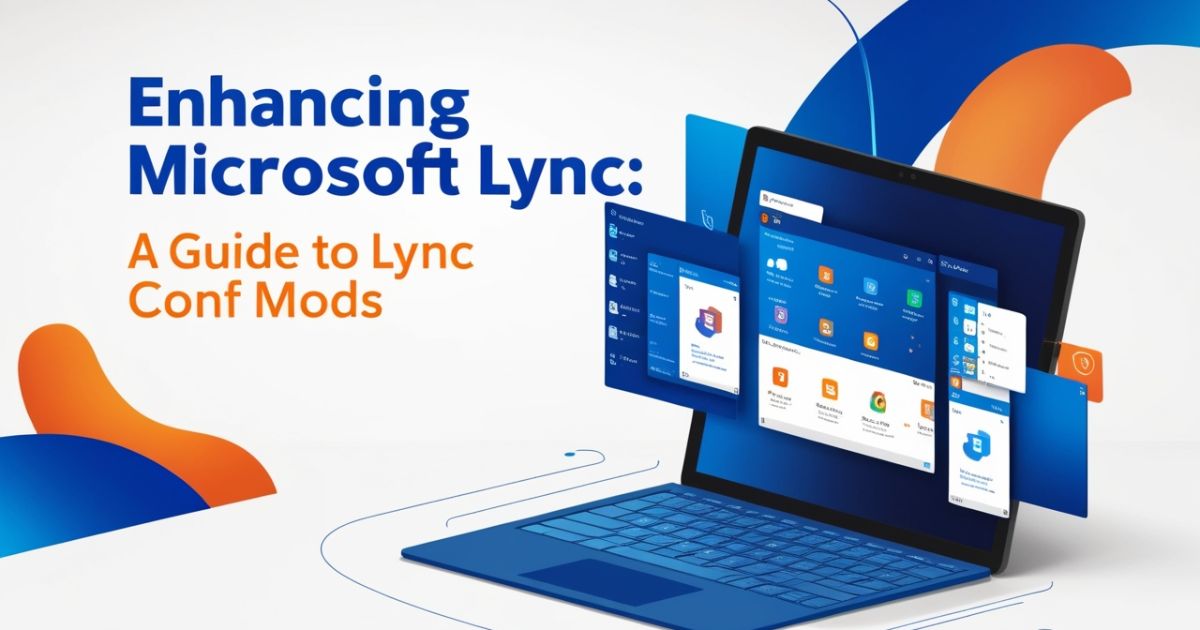In today’s fast-paced business environment, effective communication is essential for organizational success. Microsoft Lync, which evolved into Skype for Business, remains a powerful unified communication platform that many enterprises continue to rely on.
This comprehensive guide explores how to maximize your Lync investment through Lync Conf Mods – customizations that transform standard conferencing into tailored experiences that meet specific business needs.
Understanding Lync Conferencing Capabilities
Microsoft Lync provides a robust foundation for enterprise communication, combining multiple tools in one integrated platform. At its core, Lync delivers:
- Instant messaging and presence indicators that show colleague availability in real-time
- Comprehensive audio/video conferencing for both small team meetings and large organizational gatherings
- Versatile file and screen sharing capabilities that facilitate collaborative work
While these default capabilities are impressive, many organizations don’t realize the platform’s full potential without implementing Lync conference settings modifications.
The standard configuration works well for basic needs, but businesses with specific requirements—such as enhanced security, specialized audio/video settings, or particular access controls—benefit tremendously from customization.
“The difference between standard Lync and an optimized Lync environment is like comparing a factory-model car to one that’s been professionally tuned for specific performance needs.” — IT Director at a Fortune 500 company
Key Areas for Lync Conference Modifications
When approaching Lync Conf Mods, administrators should consider several key areas for enhancement. These modifications require different levels of technical expertise and can be implemented incrementally based on organizational priorities.
The primary areas where Skype for Business modifications deliver significant value include:
- Conference policy customization
- Security and compliance enhancements
- Audio and video optimization
- Regional and dial-in configurations
- Advanced PowerShell automation
- User experience improvements
- Testing and monitoring frameworks
Each area addresses specific aspects of the conferencing experience and can be tailored to meet unique organizational requirements. Before implementing changes, administrators should thoroughly assess current usage patterns and identify pain points to prioritize modifications effectively.
Customizing Conference Policies
Conference policies form the foundation of Lync meeting behaviors. These policies determine what participants can do during meetings and how the platform manages various aspects of conferencing.
The Lync Server configuration for these policies can be applied at three levels:
- Global (affecting all users)
- Site (applying to specific locations)
- User (tailored to individual needs)
Understanding policy inheritance is crucial—user policies override site policies, which override global policies. This hierarchy allows for granular control while maintaining a consistent experience across the organization.
Common Policy Modifications:
When customizing Lync conferencing policies, consider these high-impact adjustments:
- Joining permissions: Control who can join meetings and how they authenticate
- User roles: Define capabilities for organizers, presenters, and attendees
- Video control: Manage bandwidth usage by limiting or prioritizing video functionality
- Meeting expiration: Establish lifecycle policies for recurring and one-time meetings
Bold example: A financial services firm implemented role-based policy modifications that automatically assigned different capabilities to team members based on their departments. Client-facing teams received enhanced presentation capabilities, while back-office staff had streamlined meeting experiences optimized for internal collaboration.
| Policy Level | Scope | Override Precedence | Typical Use Case |
| Global | All users | Lowest | Default organization standards |
| Site | Location-specific | Middle | Regional requirements |
| User | Individual | Highest | Role-specific needs |
Security and Compliance Enhancements

In regulated industries, security isn’t optional—it’s mandatory. Lync meeting security settings can be configured to meet stringent requirements while maintaining usability. Organizations must balance accessibility with protection, especially when handling sensitive information during conferences.
Enterprise communication security considerations should include:
- Data protection during transmission
- Access control mechanisms
- Compliance with industry regulations
- Audit capabilities for security verification
Essential Security Mods:
To strengthen your Lync Server configuration from a security perspective:
- Implement data encryption for all conference communications
- Configure the meeting lobby to screen participants before admission
- Control recording permissions to prevent unauthorized documentation
- Enable conference locking to secure meetings after all participants have joined
Bold implementation: A healthcare provider enhanced their Lync security by implementing automatic meeting lobby requirements for all external participants and requiring host authentication before recordings could be initiated. This ensured HIPAA compliance during patient case discussions.
| Parameter | Value | Description |
| Identity | Global | Applies the policy globally to all users in the organization |
| AllowAnonymousParticipantsInMeetings | $true | Permits external users to join meetings, but with restrictions |
| AssignedConferenceTypeByDefault | Closed | Sets conferences to be closed by default, requiring explicit admission |
| AdmitAnonymousUsersByDefault | False | External users are not automatically admitted and must wait in the lobby |
Audio and Video Configuration
The quality of audio/video conferencing directly impacts meeting effectiveness. Optimizing Lync call quality through targeted modifications ensures clear communication even under challenging network conditions.
Bandwidth optimization for Lync calls becomes particularly important for:
- Organizations with limited network resources
- Companies with multiple global locations
- Businesses that frequently conduct large-scale webinars
Customizations:
To enhance your Lync video conferencing adjustments:
- Implement bitrate adjustments based on network capacity and meeting size
- Control access to HD video features to balance quality and performance
- Configure muted entry by default to minimize disruptions in large meetings
Bold technique: A manufacturing company with sites in both urban and rural locations implemented dynamic bitrate adjustments based on office location. Urban locations with robust connectivity maintained high-definition capabilities, while rural sites with limited bandwidth automatically used optimized settings that prioritized audio quality and basic video.
| Parameter | Value | Description |
| Identity | “BandwidthRestrictedSites” | Specifies the policy name targeting locations with limited bandwidth |
| MaxVideoRateAllowed | 2500 | Sets the maximum video bitrate to 2500 Kbps |
Dial-In Conferencing and Regional Settings
For organizations with global operations, Microsoft Lync dial-in conferencing provides essential flexibility. Team members can join from virtually anywhere using local phone numbers, making participation possible even without internet access.
Regional settings customization considerations include:
- Local compliance requirements
- Language preferences
- Time zone management
- Cost optimization for international calling
Key Customizations:
To optimize your dial-in conferencing:
- Configure region-specific dial-in numbers to reduce international calling costs
- Customize language settings for prompts and notifications
- Implement PIN policies appropriate for regional security standards
- Set up time zone-specific conference bridges
Bold example: A multinational consulting firm implemented a comprehensive dial-in strategy with local access numbers in 15 countries and automated language selection based on the dial-in number used. This reduced international calling costs by 37% while improving the user experience for non-English speaking team members.
| Parameter | Value | Description |
| Identity | sip@contoso.com | Unique SIP URI identifier for the dial-in access number |
| PrimaryUri | sip@contoso.com | Primary SIP address associated with this access number |
| DisplayName | Tokyo Conference Line | User-friendly name that appears in meeting invitations |
| LineUri | tel:+81345555555 | The actual telephone number in E.164 format |
| PrimaryLanguage | ja-JP | Default language for voice prompts (Japanese) |
| Region | APAC | Geographic region designation (Asia-Pacific) |
Leveraging Advanced PowerShell Commands
The Lync Server Management Shell provides powerful capabilities for automation and bulk configuration. Administrators comfortable with PowerShell commands for Lync can implement sophisticated modifications that would be time-consuming or impossible through the standard interface.
Lync meeting automation with PowerShell benefits include:
- Consistent implementation across large user bases
- Time savings for repetitive administrative tasks
- Detailed configuration control
- Enhanced reporting capabilities
Sample PowerShell Commands:
| Command Purpose | PowerShell Syntax | Parameters | Function |
| Bulk Policy Application | Get-CsUser -Filter {Department -eq “Sales”} | Grant-CsConferencingPolicy -PolicyName “SalesConferencingPolicy” | • Filter: Department -eq “Sales”<br>• PolicyName: “SalesConferencingPolicy” | Identifies all users in the Sales department and applies the specialized SalesConferencingPolicy to them in a single operation |
| Conference Usage Reporting | Get-CsCdrData -StartTime “01/01/2023” -EndTime “01/31/2023” | Where-Object {$_.SessionType -eq “conference”} | Export-Csv -Path “C:\Reports\JanuaryConferenceReport.csv” | • StartTime: “01/01/2023″<br>• EndTime: “01/31/2023″<br>• Filter: SessionType -eq “conference”<br>• Output: “C:\Reports\JanuaryConferenceReport.cs |
Bold strategy: An educational institution with 5,000 faculty members used PowerShell automation to implement semester-specific conferencing policies. Before each term, a scheduled script updated policies based on course schedules, automatically granting enhanced presenter capabilities to instructors for their specific class times.
| PowerShell Task | Business Benefit | Complexity Level |
| User policy assignment | Consistent experience by role | Low |
| Conference report generation | Usage insights and optimization | Medium |
| Scheduled maintenance | Reduced administrative overhead | High |
| Custom permission flows | Tailored security implementation | Advanced |
Enhancing the User Experience with Lync Conf Mods
Beyond technical configurations, advanced Lync meeting configurations should focus on creating intuitive experiences. The best unified communication tools combine powerful features with user-friendly interfaces.
**User experience enhancements focus on:
- Reducing friction in the meeting process
- Automating routine tasks
- Providing intuitive controls
- Maintaining consistent experiences across devices
Enhancements for User Experience:
Consider implementing:
- One-click meeting access integrated with organizational calendaring systems
- Customizable notifications that provide relevant information without overwhelming users
- Personalized roles that automatically assign appropriate permissions
Bold innovation: A legal firm implemented context-sensitive meeting templates that automatically configured appropriate security and recording settings based on calendar keywords. Client meetings received enhanced security, while internal team meetings prioritized collaboration features.
Testing and Monitoring Conference Modifications

Implementing Lync Conf Mods requires careful testing and ongoing monitoring. The Lync Server Control Panel and monitoring reports provide essential visibility into system performance and user experience.
Effective monitoring should track:
- Call quality metrics
- Connection reliability
- Feature usage patterns
- User satisfaction indicators
Suggested Testing Steps:
For successful implementation:
- Conduct pilot testing with representative user groups before full deployment
- Implement comprehensive performance monitoring to identify potential issues
- Collect and analyze user feedback to guide refinements
- Establish a continuous improvement process
Bold approach: A technology company created a structured testing framework with dedicated test groups representing different use cases—remote workers, executive staff, customer-facing teams, and international employees. Each group evaluated modifications against specific criteria, providing targeted feedback that informed the final implementation.
Case Study: Global Financial Services Firm
A multinational financial services organization with 50,000 employees across 30 countries faced significant challenges with their standard Lync implementation:
- Inconsistent meeting experiences across regions
- Security concerns for client communications
- Bandwidth constraints in developing markets
- Administrative burden for IT staff
By implementing a comprehensive set of Lync Conf Mods, they achieved:
- 40% reduction in reported technical issues
- 99.8% compliance with security requirements
- 28% bandwidth reduction through optimized video settings
- 65% decrease in administrative time through PowerShell automation
Their phased approach included:
- Security enhancements for regulatory compliance
- Regional dial-in optimization
- Bandwidth-sensitive video configurations
- User experience improvements
- Administrative automation
Conclusion
Microsoft Lync remains a valuable unified communication platform that can be significantly enhanced through thoughtful configuration. By implementing strategic Lync Conf Mods, organizations can create secure, efficient, and user-friendly conferencing experiences tailored to their specific needs.
The key to successful implementation lies in understanding both technical possibilities and business requirements. Start with the most impactful modifications for your organization, thoroughly test changes before deployment, and continuously monitor performance to ensure optimal results.
As business communication continues to evolve, these customizations allow organizations to adapt their conferencing environment to changing needs while maximizing their investment in Microsoft’s communication infrastructure. Whether you’re focused on security, user experience, or administrative efficiency, the right Lync Conf Mods can transform your communication capabilities.
Additional resources for Lync administrators:
- Microsoft TechNet documentation for Lync Server
- PowerShell scripting guides for unified communications
- Lync Server best practices white papers
- Lync User Experience design guidelines
Have you implemented custom modifications to your Microsoft Lync environment? What impact did they have on your organization’s communication effectiveness? Share your experiences in the comments below.
Read This Post: Jayoma Law Firm: Comprehensive Legal Services for Clients
Hello, I’m Alex, a senior legal consultant and content editor on this website. With over a decade of experience in constitutional law and corporate litigation, I bring comprehensive legal expertise to our readers.








